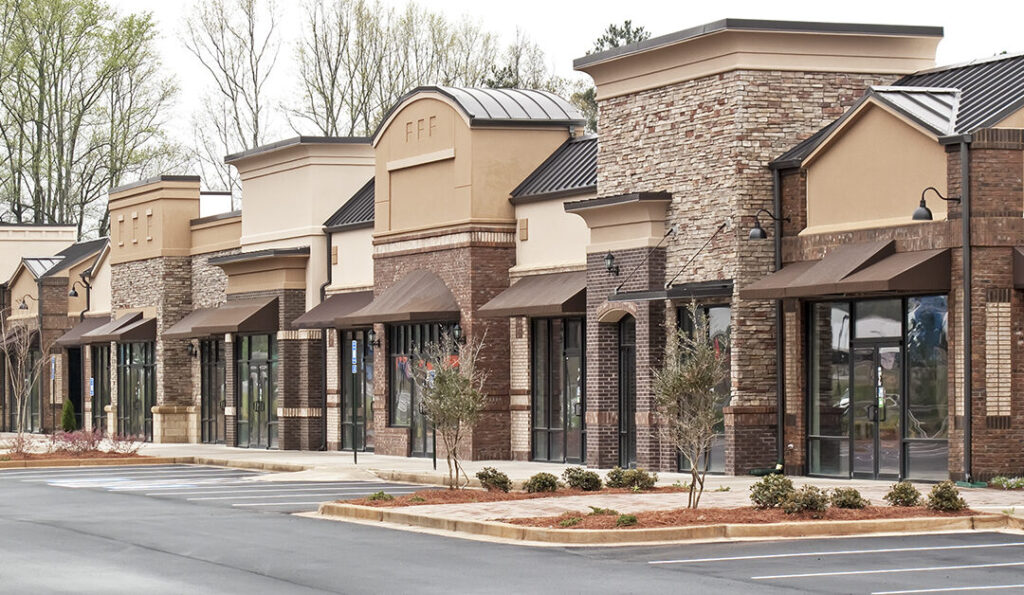The fundamentals of finding a retail store for rent haven’t changed, and growth opportunities continue to drive the expansion of pandemic-resistant franchises and independently operated stores, fast food chains, quick-service restaurants. At Equity Retail Brokers, we use the latest tools and rely on decades of experience to help business owners find high-performing space for rent. What follows is the first in a series of blog posts outlining key considerations for entrepreneurs as they pursue retail leasing opportunities.
Step 1: Using Websites to Find Retail Stores for Rent
By the time most people get serious about leasing retail space, they have already spent long hours on the Internet answering key questions about the business itself, such as the basic concept and brand, the value proposition on offer, target customers, the competitive difference, and so on.
Likewise, web searches tend to figure heavily when operators start to explore the suitability of specific ZIP codes and/or shopping centers. That may mean scrolling through sites such as Equity Retail Brokers’ extensive listings of properties for lease (primarily in eastern Pennsylvania/the Philly suburbs, New Jersey, and Delaware) or Crexi, a national database of space for lease in real estate sectors such as retail, office, industrial and multifamily residential. (In addition, brokers often use Costar and Loopnet to find real estate locations on behalf of their clients.)
Google Earth and Google Maps are useful as well. By googling something as simple as “retail store for rent, Plymouth Meeting, Pennsylvania,” an entrepreneur could begin to get the lay of the land for retail in that market. However, there’s an important caveat here: When you’re searching for a retail storefront for lease, you need to be efficient with your Internet time. No entrepreneur has endless hours to waste on dead ends.
It’s why we recommend dovetailing your web research with Step 2 of the process…
Step 2: Drive the Market
Based on your online research, you’ve identified some shopping centers and submarkets that may meet your site criteria. The next step is to get in the car and check them out in person.
Let’s say you want to open a music school for kids. Your Google search may not have shown you the sex shop, drug paraphernalia store—or to use a recent real-world example, the malodorous sewage-treatment plant—that sits right across the street from that storefront. By visiting sites in person, you can more quickly spot deal-breakers related to access, traffic, parking, visibility, the surrounding neighborhood, and more.
Step 3: Call a Broker
Savvy operators base their site-selection decisions on information, not guesses. It’s why teaming with a retail broker can be a game-changer for those seeking retail space for rent.
Veteran retail brokers know their local markets backward and forward. They’re on a first-name basis with landlords and have driven every retail corridor and visited every shopping center in their territories. They also keep a sharp eye on important trends—everything from the operators that are driving the most traffic, to those that are headed for chainwide liquidation.
Let’s say you want to open a takeout-driven sandwich shop with a drive-through lane. All by yourself, you visit a local shopping center that seems perfect, but then notice that the end-cap spaces—the only storefronts for which drive-through lanes would be viable—are already occupied. At that point, you could easily cross that promising property off your list.
The broker, though, could have a very different perspective. She happens to know that one of those end-cap operators is about to close down and leave. Good brokers talk to local landlords every day about spaces that are coming available. By working with a professional retail broker, you stand a much better chance of getting the first shot at high-demand storefronts for lease.
Brokers also know to ask hard questions that may not occur to every entrepreneur. Let’s say you notice three sizable office buildings located near a particular strip center that you have in mind for your sandwich shop. Your thought is that surely these offices will translate into strong lunch crowds.
The broker consults their commercial real estate contacts, databases, and other sources and eventually waves you off of the site. “It turns out that the building to the east is half-empty,” she explains. “The second one is on a downward trend, and the third is slated for demolition in three months.
Part 2 of this series covers key considerations around location, visibility, traffic, co-tenancy, and economics. Part 3 is all about negotiating the deal.
